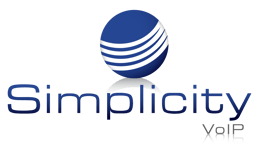Equip Your Call Center with the VoIP Tools You Need
In a thriving call center, the right tools are essential. One of the most important tools you'll need is a VoIP (Voice over Internet Protocol) system. VoIP lets you make and receive calls using an internet connection rather than traditional phone lines. This can save your business money on phone bills and provide you with advanced features that improve the efficiency and effectiveness of your call center.
%20(1).jpg?width=800&height=533&name=arlington-research-kN_kViDchA0-unsplash%20(2)%20(1).jpg) Why Do I Need a VoIP System?
Why Do I Need a VoIP System?
VoIP (Voice over Internet Protocol) systems offer several advantages for call centers, including cost savings, increased functionality, and improved efficiency.
VoIP systems have more functionality than traditional phone systems. Calls can be made and accepted from a mobile app, webphone or desk phone. These flexible features make VoIP particularly beneficial for call centers with remote agents.
Additionally, CRM systems integrations improve the customer experience by providing quick and convenient access to vital customer information during calls.
VoIP systems are also more efficient, allowing accurate routing and improved call resolution times by integrating with other systems, providing better performance management for call center supervisors by enabling them to assess and manage agent performance.
Tools to Maximize ROI on Your VoIP System
Here are some of the essential VoIP tools you should consider equipping your call center with:
-
Auto-attendant: An automated system that greets callers and prompts them to select from a list of options, auto-attendant is a powerful feature that can save your call center agents a lot of time.
Widely used by businesses to efficiently handle and direct incoming calls. Callers select from a list of options, such as pressing a number for a specific department or language, which guides them to the right person or information. This can save call center agents a lot of time and improve the caller's experience by ensuring they are connected with the right person as quickly as possible.
Auto-attendants can be designed and organized based on the call center's needs with the most significant call volumes. The call center can chart call flows, which helps callers move appropriately through the system, from listening to business hours information to scheduling an appointment. And some call centers set up auto-attendant for after-hours calls, which are still answered even when the company is closed.
-
Call routing: With VoIP, you can set up call routing rules that automatically direct calls to the appropriate agent based on factors like the caller's phone number, time of day, and type of call. This helps ensure callers connect with the most qualified available agents with the training and skillsets needed to assist the customer.
Call routing helps businesses reduce hold times and prevents endless call transfers to multiple agents, improving the overall customer experience. Call routing automatically distributes incoming calls to a specific agent, department, or queue based on preferred criteria inside a cloud-based call center software.
Call recording, transcription, and sentiment analysis: Recording calls and creating transcripts can be beneficial for training and quality control. Many VoIP systems have built-in call recording capabilities, so you can easily capture and review calls to help improve your agents' performance.
Sentiment analysis is the process of identifying and analyzing the natural nuances of customer context. Using natural language processing (NLP), machine learning, and computational linguistics, sentiment analysis mines data from customer interactions and assigns a sentiment score of positive, negative, or neutral. Call centers agent would get a call from a client and hear certain key words indicating stress. Sentiment analysis would process the data and help the agent to react empathetically.
This process identifies agents consistently involved with calls that have positive sentiment. This allows businesses to identify and reward top-performing agents and learn from their interactions and quickly gauge customer satisfaction levels and the quality of the help provided by customer support. This helps enterprises tailor and improve how their agents handle support and sales requests over the phone, allowing them to adjust to the customer experience.
These features are also effective training tools. Call recording helps maintain customer data for audits and reports, improving efficiency and reducing customer complaints. Listening to recorded mock calls is a great way to identify and correct mistakes before an agent handles actual customer calls. This can be part of the training module for new call center agents, which ultimately improves the efficiency and effectiveness of the call center.
Integrations: Integrations are essential for call centers, allowing businesses to improve efficiency, performance, and overall effectiveness. Call center software and VoIP integrations promote collaboration and data sharing.
Integrations allow call centers to connect their VoIP system with other software and tools, such as customer relationship management (CRM) systems, helpdesk software, omnichannels, and analytics platforms. This can help streamline operations, improve customer service, and make data-driven decisions.
Integrating a VoIP system with a CRM system can help call center agents access customer information more easily and quickly, which contributes to an improved customer experience and promotes more efficient and accurate information sharing.
Similarly, integrating a VoIP system with helpdesk software and omnichannels help call center agents resolve customer issues more quickly and efficiently. This can help improve customer satisfaction and reduce call handle times. This helps call centers measure and analyze key metrics like call volume, call duration, and customer satisfaction.
Integrations also allow businesses to operate call centers remotely, making it easier to develop remote and distributed teams and offering live visibility into call center activity, enabling quick, informed decision-making.
-
Conference calls: With VoIP, you can easily set up conference calls with multiple participants. This can be useful for training sessions, team meetings, and customer calls.
In call centers, conference calls can be a beneficial tool for VoIP, allowing multiple participants to join a call from different locations. This can improve productivity and collaboration and reduce travel expenses.
Additionally, conference call transcription can be a helpful feature for call centers using VoIP. This service records one-on-one telephone calls and more prominent group meetings and often includes recording transcription services. This makes it easy to keep track of action items and new ideas and protects the company in case of a legal issue.
-
Reporting and analytics: Analytics tools for call centers provide actionable insights into call quality, customer service performance, and other essential metrics. VoIP systems can provide detailed reports and analytics on your call center's performance. This can help you identify areas for improvement and track your progress over time.
You can use call analytics to assess voice clarity, latency, call time, wait times, and other factors that impact call quality. This can help ensure that customers receive great quality calls when they call for assistance and scale operations as your business grows.
Equipping your call center with these VoIP tools can improve your call center's efficiency and effectiveness while saving your business money on phone bills.
Choosing the right VoIP provider is crucial; choose a provider that can provide you with the features and 24/7 support and scale your business as it grows. Simplicity has a host of VoIP options that can help your business equip your call center with the right tools to help your business find success.




.jpg?width=352&name=austin-distel-97HfVpyNR1M-unsplash%20(1).jpg)
.jpg?width=352&name=berkeley-communications-WEDDt-u3q3o-unsplash%20(1).jpg)